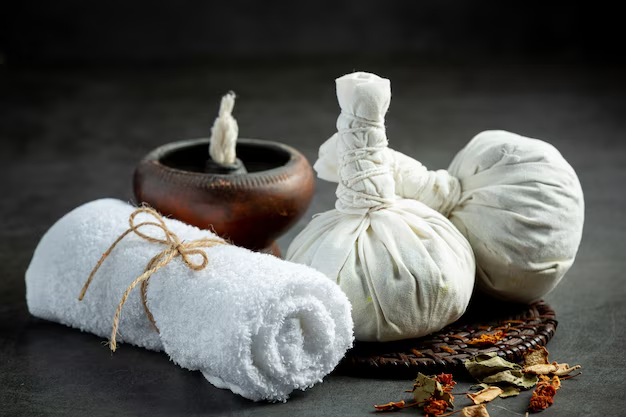Panchakarma Therapy for Diabetes: A Holistic Approach to Managing Blood Sugar Levels
Panchakarma therapy has emerged as a promising approach for managing various chronic conditions, including diabetes mellitus. Rooted in ancient Ayurvedic principles, Panchakarma offers a holistic framework aimed at detoxifying the body, restoring balance among the doshas (Vata, Pitta, Kapha), and promoting overall well-being. This article explores the principles of Panchakarma, its relevance in diabetes management, specific therapeutic techniques involved, and the current evidence supporting its use.
Understanding Panchakarma Therapy
Panchakarma, a Sanskrit term meaning “five actions,” is a profound detoxification and rejuvenation therapy in Ayurveda. It aims to remove accumulated toxins (ama) from the body and restore the body’s innate balance. According to Ayurvedic philosophy, diabetes mellitus primarily stems from an imbalance in the Kapha and Pitta doshas, exacerbated by factors such as poor diet, sedentary lifestyle, and genetic predisposition. Panchakarma therapy addresses these imbalances through a series of therapeutic interventions tailored to individual needs.
Therapeutic Modalities in Panchakarma

- Vamana (Therapeutic Emesis): Vamana involves the administration of herbal preparations to induce controlled vomiting. This process helps eliminate excess Kapha dosha, particularly from the upper respiratory tract and stomach. In diabetes management, Vamana aims to improve metabolism, enhance digestion, and reduce insulin resistance.
- Virechana (Purgation Therapy): Virechana employs herbal laxatives to cleanse the intestines and eliminate excess Pitta dosha. By promoting detoxification, Virechana enhances liver function, regulates metabolism, and supports better glycemic control in diabetic individuals.
- Basti (Enema Therapy): Basti therapy involves the introduction of medicated oils and decoctions into the rectum. It primarily targets Vata dosha, strengthening the digestive system, improving nutrient absorption, and alleviating symptoms such as constipation and neuropathy associated with diabetes.
- Nasya (Nasal Administration): Nasya therapy focuses on administering herbal oils or powders through the nasal passages. It clears the sinuses, enhances respiratory function, and reduces inflammation. In diabetic patients, Nasya may help manage oxidative stress and improve insulin sensitivity.
- Raktamokshana (Bloodletting Therapy): Though less commonly practiced today, Raktamokshana involves purifying the blood to remove toxins and improve circulation. It may have implications for managing diabetes-related complications by reducing oxidative stress and supporting cardiovascular health.
Role of Panchakarma in Diabetes Management
Panchakarma therapy offers a multifaceted approach to managing diabetes by addressing both the symptoms and underlying causes of the condition. Key benefits include:
- Balancing Doshas: By restoring equilibrium among the doshas (Vata, Pitta, Kapha), Panchakarma aims to alleviate the root causes of diabetes and promote overall health.
- Improving Digestion: Enhanced digestion and metabolism play crucial roles in managing diabetes. Panchakarma therapies like Virechana and Basti help optimize digestive function, thereby aiding in nutrient absorption and utilization.
- Enhancing Insulin Sensitivity: Studies suggest that Panchakarma therapies can improve insulin sensitivity and reduce insulin resistance, leading to better blood sugar control.
- Reducing Complications: Diabetes often leads to complications such as neuropathy, nephropathy, and retinopathy. Panchakarma therapies may help mitigate these complications by improving circulation, reducing inflammation, and supporting organ function.
Integrating Panchakarma with Conventional Treatment
It’s important to note that Panchakarma should complement conventional diabetes management strategies, not replace them. Patients should continue to monitor their blood glucose levels, adhere to prescribed medications, and follow dietary recommendations as advised by healthcare providers.
Safety and Considerations
Before undergoing Panchakarma therapy, individuals should consult qualified Ayurvedic practitioners or healthcare providers, especially if they have pre-existing medical conditions or are taking medications. Proper screening ensures that therapies are personalized to individual needs and health conditions.
Conclusion
Panchakarma therapy offers a holistic and personalized approach to managing diabetes mellitus by addressing underlying imbalances and promoting overall health and well-being. While more robust scientific research is needed to fully establish its efficacy and mechanisms of action, the integration of Panchakarma with conventional treatments holds promise in improving glycemic control, reducing complications, and enhancing quality of life.
As interest in complementary and alternative medicine grows, exploring the potential benefits of Panchakarma in diabetes management continues to be an intriguing area of research and practice. By embracing the principles of holistic healing and personalized care, Panchakarma empowers individuals to take proactive steps towards managing their diabetes and achieving optimal health.









Leave a reply